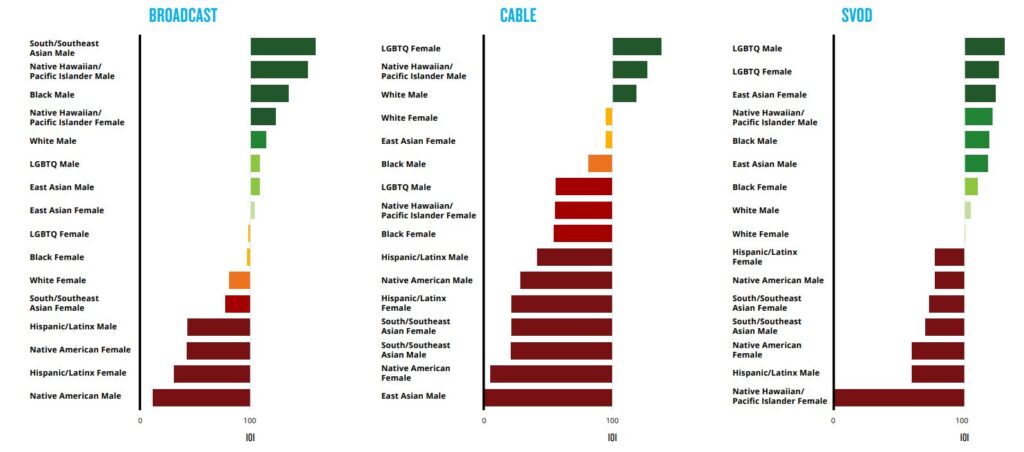By Louis Chan, AsAmNews National Correspondent
If you’re looking for Asian American and Pacific Islander representation, you likely won’t find it on cable television.
A new report released this morning from the data research company Nielsen concludes diversity of on screen programming is low across all platforms, but extremely low on cable. It’s better on broadcast and subscription video on demand.
Overall, people of color account for 26.7% of all screen time, while they make up 39.5% of the population.
Breaking it down even further, Asian Americans and Pacific Islanders comprise 6.2% of the total US population, but only 2.1% of the screen time on cable and 5.2% on streaming services. AAPIs are well represented on broadcast television getting 11.7% of the share on screen.
“People like seeing their stories on screen,” said Ronjan sikdar, Senior Vice President of Media Analytics at Nielsen. “They like their stories represented, but just having programs having all Asian cast doesn’t necessarily solve the challenge of who we’re bringing into living rooms Advertisers want as broad audience as possible. We need a broad representation in programming.”
Asian American and Pacific Islander actors are most often seen in science fiction and dramas, but hardly ever in comedies and reality programs.
Nielsen found AAPI actors tend to be grouped into specific themes. The researchers found the roles of East Asian actors can be classified under the themes of discovery, courage, bravery, justice and challenge. They often play the role of someone’s son.
South and Southeast Asian actors are often depicted in roles associated with courtrooms and offices. The roles they play are described as thrilling, emotional and awakening.
Sikdar says the themes represented connect to the genres Asian Americans tend to get casted in-dramas and Sci Fi.

South and Southeast Asian actors are doing extremely well on broadcast television. They make up 3.9% of the population, but get 9.1% of the screen time.
On the opposite end of the spectrum, they are seen less than 0.3% on cable and 2.1% on streaming services.
East Asians who are 2.1% of the population, have parity on video on demand, get 2.5% of the screen time on broadcast, but only 1% on cable.

The Nielsen report had little information on Native Hawaiians and Pacific Islanders, but the graphic above shows representation of NHPI men is good on broadcast, cable and video on demand. NHPI women also do well on broadcast, but are way underrepresented on both cable and video on demand.
The report also found AAPI women are consistently underrepresented across all platforms. As with the AAPI population overall, they do better on broadcast and video on demand than on cable.

The report also drilled down on Asian Americans in San Francisco. It found Asian Americans outpaced the general population in streaming video. They are also two times more likely to consume alternative media, perhaps indicating they are not satisfied with the representation in general media.
AsAmNews has Asian America in its heart. We’re an all-volunteer effort of dedicated staff and interns. Check out our new Instagram account. Go to our Twitter feed and Facebook page for more content. Please consider interning, joining our staff, or submitting a story.


